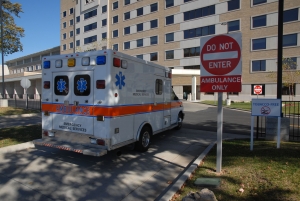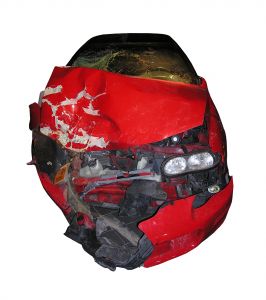Types of Auto Insurance Coverage
 Car insurance has many features, and it can be confusing keeping them straight in your mind. Yet, it is really important to understand all the aspects of car insurance coverage so that you can make informed decisions about your policy.
Car insurance has many features, and it can be confusing keeping them straight in your mind. Yet, it is really important to understand all the aspects of car insurance coverage so that you can make informed decisions about your policy.
You can get car insurance quotes right here once you insert your ZIP code into the FREE box immediately!
Use this guide for the types of auto insurance coverage whenever you need a refresher on the different features of car insurance. There are six basic parts of an auto insurance policy, and then smaller, optional features that can create their own seventh group. Again, understanding each part of your car insurance policy ensures that you have the information to make the best decisions for you.
Injury Liability
The first two types of auto insurance coverage concern payouts to those who you hurt or cause damage to in an accident. Generally referred to as liability coverage, because you are financially responsible, it is divided into injuries to people and damages to vehicles. While a liability insurance-only policy is the cheapest coverage option, it is not always the best option,
All states require minimum amounts of liability coverage, though each state has its own minimum amounts that are needed to be legally driving on the road. It is broken into a minimum amount for each person and a minimum amount for the entire accident.
Florida has the lowest requirements for injury liability insurance, with only $10,000 per individual and $20,000 for the entire accident required.
Ohio is a close second with only $12,500 for each individual and $25,000 for the entire accident. Most states have a minimum amount of $25,000 per person and $50,000 for the entire accident. The highest states, such as Alaska, Maine, and Wisconsin require $50,000 for each individual and $100,000 per accident.
The first is called injury liability or bodily injury liability. This coverage pays for the medical bills for those injured in a crash th at you caused.
at you caused.
Since bodily injury liability car insurance has limits that you choose, you need to know that you will likely be financially responsible for any amounts above and beyond your limits. For instance, if you have $50,000 in injury liability coverage for an entire accident, and the medical bills for those not at-fault total $75,000, then you will be responsible for the $25,000 that your car insurance company does not have to pay.
The Insurance Information Institute maintains that insurance experts recommend every driver carry no less than $100,000 per person and $300,000 to cover the entire accident. Anything less, according to the experts, just won’t be enough coverage in the event of a serious accident.
Property Damage Liability
The second part of liability insurance coverage is property damage liability. Property damage liability covers the costs to repair or replace the not-at-fault driver’s vehicle. Damage liability also covers damages to surrounding property, such as fences, telephone poles, and even structures.
California and New Jersey have the lowest mandatory amounts of property damage of all states in the U.S., at only $5,000.
Most would agree that $5,000 will hardly cover the damages to one vehicle even in a minor accident. Ohio is again the next cheapest, with only $7,500 required to cover the vehicle repairs and repairs to surrounding property. Other state minimums range from $10,000, to $15,000, topping out at $25,000 in co verage. You always have the option of buying more coverage than just the minimum necessary amounts.
verage. You always have the option of buying more coverage than just the minimum necessary amounts.
Again, it is important to note that you will likely be held financially responsible for any repair costs beyond what your car coverage provider is required to pay. If you opt for $10,000 in property damage liability coverage, then that is all your insurer is required to pay.
If, for instance, you rear-end a vehicle and send it through a fence and into a utility pole, then you could be responsible for these financial figures: $6,500 in damages to the other vehicle, $3,500 to replace the utility pole, and $1,500 to replace the fence. That amounts to $11,500 in damages, of which your insurer will only pay $10,000. That doesn’t even begin to address your own damages.
Uninsured and Underinsured Motorist Coverage
The next coverage type that you will find as part of most car insurance policies is uninsured/underinsured motorist coverage. Many states require that drivers purchase such coverage, but not all do.
This coverage can cover your injuries and damages in the event that you are hit by a driver who doesn’t have enough insurance, or—even worse—has no insurance at all. The latest estimates by the Insurance Research Council indicate that, on average, one in seven drivers on the roadways has no insurance.
Some states have lower numbers of uninsured drivers, and other states have coverage rates that are as high as one in every four drivers who lack insurance.
Unfortunately, your best recourse when an uninsured driver causes your damages and injuries is to have insurance to cover it yourself. The insurance industry leaders at the National Association of Insurance Commissioners assert that you will be responsible for covering costs caused by an at-fault driver without insurance. You should make sure that you have the coverage on your policy to pay for your injuries and damages. That way, you can get back on your feet as soon as possible.
Uninsured/underinsured coverage also covers the passengers in your vehicle, according to the website created by the Insurance Information Institute and the Better Business Bureau, Wiser Drivers. In that same vein, uninsured/underinsured coverage will also cover you if you are the victim of a hit-and-run, as the driver is unidentifiable.
Personal Injury Protection
Personal Injury Protection, which is also referred to as PIP or medical payments insurance, does just what it sounds like; it pays for your medical bills from an accident, regardless of fault. It will also co ver the injuries of your passengers.
ver the injuries of your passengers.
Some states require PIP coverage, while others do not. It is a must if you have no health insurance coverage because medical bills can easily rise into the thousands of dollars just from a minor accident. Those states that do require medical payments insurance usually require you to select a limit, and most have a minimum amount of PIP coverage that you must buy.
Each insurance provider’s PIP coverage will be different. Some will also include lost wages and funeral benefits. However, the main focus of such coverage is to ensure that your medical bills from an accident are paid.
Collision
 The last two distinct parts of car insurance coverage focus on paying for damages to your vehicle, which is an important characteristic not found with liability-only coverage. The first is collision. Collision covers the cost of repairs to your vehicle from a crash, even if you were at fault for the accident.
The last two distinct parts of car insurance coverage focus on paying for damages to your vehicle, which is an important characteristic not found with liability-only coverage. The first is collision. Collision covers the cost of repairs to your vehicle from a crash, even if you were at fault for the accident.
If you are in an accident with another vehicle or an object such as a tree, fence, or utility pole, then collision coverage is the one that will pay for repairs. It will either cover the costs of repairs or the fair market value of your car if it is deemed a total loss. If the costs of repairs amount to more than your vehicle is worth, then the insurance company will likely deem it to be a total loss.
While collision coverage will pay for your damages or the fair market value of your vehicle, it will pay for the costs, minus a deductible. A deductible is the amount that is your responsibility to pay. They are aimed at reducing low-dollar claims.
Common deductible amounts include $250, $500 and $1,000, though some insurance companies allow you to choose a $0 deductible or even a much higher deductible, such as $2,000.
The higher your deductible amount, the lower the cost will be for the coverage. However, you need to ensure that you choose a deductible amount that is comfortable for you to pay. If you choose a $2,000 deductible, and your repairs total $5,000, then your insurer will only cover $3,000.
Comprehensive
Comprehensive coverage is also aimed at repairing or replacing the value of your vehicle, but it covers those events that are not connected to an accident. Basically, if you are using your comprehensive coverage, then no one is at fault for the damages, or the at-fault party can’t be identified.
For instance, if you sustain damage from a storm, such as a falling tree limb, dents from hail, or flooding, then comprehensive cov erage will pay for the repairs or value of the vehicle as no one can be deemed liable for the accident. Other instances that comprehensive coverage pays for include hitting wild animals, fire, or vandalism.
erage will pay for the repairs or value of the vehicle as no one can be deemed liable for the accident. Other instances that comprehensive coverage pays for include hitting wild animals, fire, or vandalism.
Car theft is also covered by comprehensive, as the guilty party typically can’t be identified or they can’t pay for the damages. If your car is lost for good, then the insurance company will pay the fair market value of your vehicle, minus a deductible like the one you specified for collision coverage.
Fair market value of your vehicle is the amount that your vehicle could likely be sold for based on the market in your area. This takes into account the age of the vehicle, how many miles are on the vehicle, and the condition of the vehicle. You can find fair market values for reference on sites such as Kelley Blue Book’s or NADA.com. The fair market value will not take into account what you originally paid for your vehicle, what you have already paid for it, or how much you might still owe.
Other Options
There are a host of other options that can be included on a car insurance policy. For instance, you might want gap insurance, which will cover the difference in fair market value and what you paid for a vehicle. Not everyone will need gap insurance; it is most common for newer vehicles that depreciate in value faster than you pay off the loan.
Another coverage option is roadside assistance.
Each insurer will include different benefits in its roadside assistance, but you will likely receive assistance for a flat tire, if you run out of gas, or if you lock your keys in your car.
Additionally, you will also want towing, which can be a real boon if you break down or you need your vehicle to be towed after an accident.
Another option that is on many car insurance policies is rental car reimbursement. This will pay for a rental car while you are waiting for your vehicle to be fixed or replaced. Now that you understand all the types of auto insurance coverage, you can make decisions that are based on solid information.
Find car insurance coverage options right here once you insert your ZIP into the FREE box!
